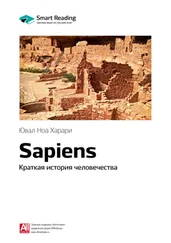In contrast, most people today successfully live up to the capitalist-consumerist ideal. The new ethic promises paradise on condition that the rich remain greedy and spend their time making more money, and that the masses give free rein to their cravings and passions – and buy more and more. This is the first religion in history whose followers actually do what they are asked to do. How, though, do we know that we’ll really get paradise in return? We’ve seen it on television.
18
A Permanent Revolution
THE INDUSTRIAL REVOLUTION OPENED up new ways to convert energy and to produce goods, largely liberating humankind from its dependence on the surrounding ecosystem. Humans cut down forests, drained swamps, dammed rivers, flooded plains, laid down tens of thousands of kilometres of railroad tracks, and built skyscraping metropolises. As the world was moulded to fit the needs of Homo sapiens , habitats were destroyed and species went extinct. Our once green and blue planet is becoming a concrete and plastic shopping centre.
Today, the earths continents are home to almost 7 billion Sapiens. If you took all these people and put them on a large set of scales, their combined mass would be about 300 million tons. If you then took all our domesticated farmyard animals – cows, pigs, sheep and chickens – and placed them on an even larger set of scales, their mass would amount to about 700 million tons. In contrast, the combined mass of all surviving large wild animals – from porcupines and penguins to elephants and whales – is less than 100 million tons. Our children’s books, our iconography and our TV screens are still full of giraffes, wolves and chimpanzees, but the real world has very few of them left. There are about 80,000 giraffes in the world, compared to 1.5 billion cattle; only 200,000 wolves, compared to 400 million domesticated dogs; only 250,000 chimpanzees – in contrast to billions of humans. Humankind really has taken over the world. 1
Ecological degradation is not the same as resource scarcity. As we saw in the previous chapter, the resources available to humankind are constantly increasing, and are likely to continue to do so. That’s why doomsday prophesies of resource scarcity are probably misplaced. In contrast, the fear of ecological degradation is only too well founded. The future may see Sapiens gaining control of a cornucopia of new materials and energy sources, while simultaneously destroying what remains of the natural habitat and driving most other species to extinction.
In fact, ecological turmoil might endanger the survival of Homo sapiens itself. Global warming, rising oceans and widespread pollution could make the earth less hospitable to our kind, and the future might consequently see a spiralling race between human power and human-induced natural disasters. As humans use their power to counter the forces of nature and subjugate the ecosystem to their needs and whims, they might cause more and more unanticipated and dangerous side effects. These are likely to be controllable only by even more drastic manipulations of the ecosystem, which would result in even worse chaos.
Many call this process ‘the destruction of nature’. But it’s not really destruction, it’s change. Nature cannot be destroyed. Sixty-five million years ago, an asteroid wiped out the dinosaurs, but in so doing opened the way forward for mammals. Today, humankind is driving many species into extinction and might even annihilate itself. But other organisms are doing quite well. Rats and cockroaches, for example, are in their heyday. These tenacious creatures would probably creep out from beneath the smoking rubble of a nuclear Armageddon, ready and able to spread their DNA. Perhaps 65 million years from now, intelligent rats will look back gratefully on the decimation wrought by humankind, just as we today can thank that dinosaur-busting asteroid.
Still, the rumours of our own extinction are premature. Since the Industrial Revolution, the world’s human population has burgeoned as never before. In 1700 the world was home to some 700 million humans. In 1800 there were 950 million of us. By 1900 we almost doubled our numbers to 1.6 billion. And by 2000 that quadrupled to 6 billion. Today there are just shy of 7 billion Sapiens.
Modern Time
While all these Sapiens have grown increasingly impervious to the whims of nature, they have become ever more subject to the dictates of modern industry and government. The Industrial Revolution opened the way to a long line of experiments in social engineering and an even longer series of unpremeditated changes in daily life and human mentality. One example among many is the replacement of the rhythms of traditional agriculture with the uniform and precise schedule of industry.
Traditional agriculture depended on cycles of natural time and organic growth. Most societies were unable to make precise time measurements, nor were they terribly interested in doing so. The world went about its business without clocks and timetables, subject only to the movements of the sun and the growth cycles of plants. There was no uniform working day, and all routines changed drastically from season to season. People knew where the sun was, and watched anxiously for portents of the rainy season and harvest time, but they did not know the hour and hardly cared about the year. If a lost time traveller popped up in a medieval village and asked a passerby, ‘What year is this?’ the villager would be as bewildered by the question as by the strangers ridiculous clothing.
In contrast to medieval peasants and shoemakers, modern industry cares little about the sun or the season. It sanctifies precision and uniformity. For example, in a medieval workshop each shoemaker made an entire shoe, from sole to buckle. If one shoemaker was late for work, it did not stall the others. However, in a modern footwear-factory assembly line, every worker mans a machine that produces just a small part of a shoe, which is then passed on to the next machine. If the worker who operates machine no. 5 has overslept, it stalls all the other machines. In order to prevent such calamities, everybody must adhere to a precise timetable. Each worker arrives at work at exactly the same time. Everybody takes their lunch break together, whether they are hungry or not. Everybody goes home when a whistle announces that the shift is over – not when they have finished their project.
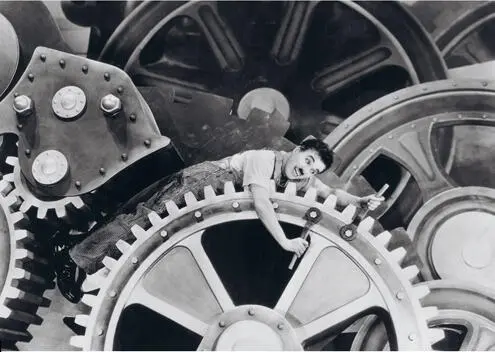
42. Charlie Chaplin as a simple worker caught in the wheels of the industrial assembly line, from the film Modern Times (1936).
The Industrial Revolution turned the timetable and the assembly line into a template for almost all human activities. Shortly after factories imposed their time frames on human behaviour, schools too adopted precise timetables, followed by hospitals, government offices and grocery stores. Even in places devoid of assembly lines and machines, the timetable became king. If the shift at the factory ends at 5 p.m., the local pub had better be open for business by 5:02.
A crucial link in the spreading timetable system was public transportation. If workers needed to start their shift by 08:00, the train or bus had to reach the factory gate by 07:55. A few minutes’ delay would lower production and perhaps even lead to the lay-offs of the unfortunate latecomers. In 1784 a carriage service with a published schedule began operating in Britain. Its timetable specified only the hour of departure, not arrival. Back then, each British city and town had its own local time, which could differ from London time by up to half an hour. When it was 12:00 in London, it was perhaps 12:20 in Liverpool and 11:50 in Canterbury. Since there were no telephones, no radio or television, and no fast trains – who could know, and who cared? 2
Читать дальше
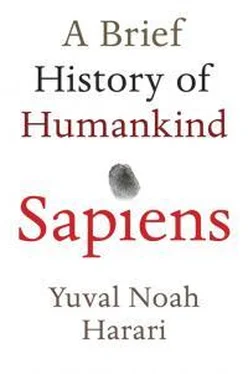



![Юваль Ной Харари - Sapiens. Краткая история человечества [litres]](/books/34310/yuval-noj-harari-sapiens-kratkaya-istoriya-cheloveche-thumb.webp)
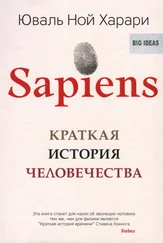


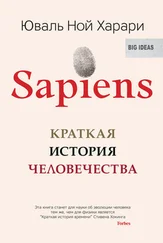

![Юваль Ной Харари - 21 урок для XXI века [Версия с комментированными отличиями перевода]](/books/412481/yuval-noj-harari-21-urok-dlya-xxi-veka-versiya-s-ko-thumb.webp)


